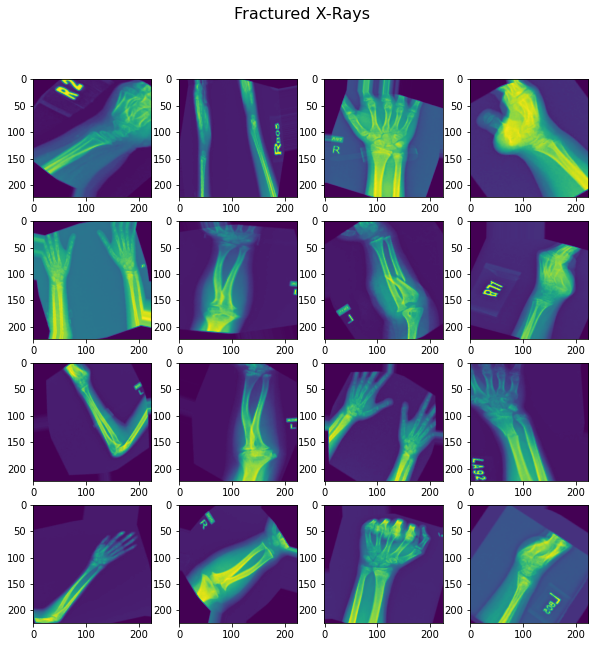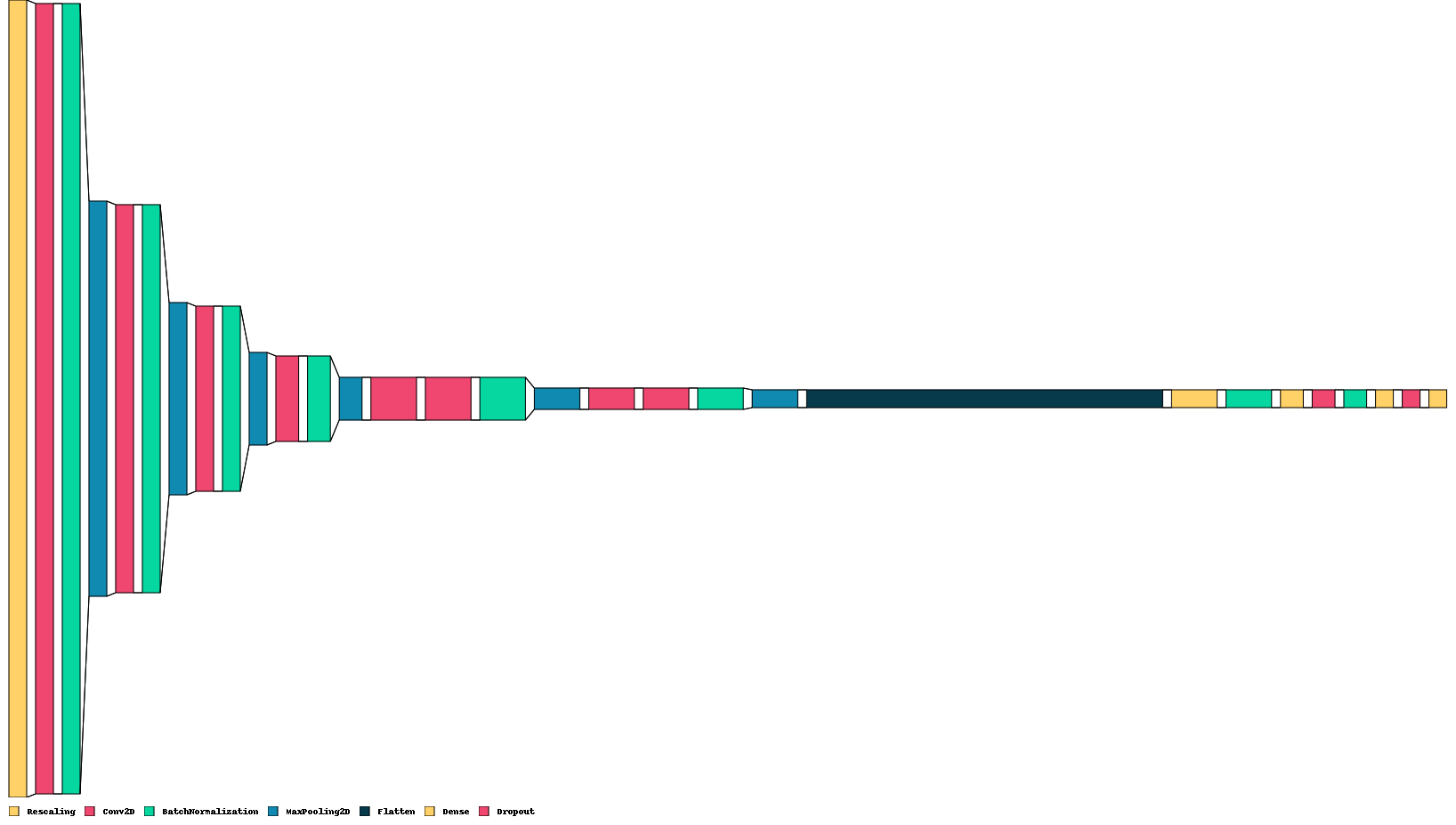Summary
This project creates a model architecture for a Convolutional Neural Network that could predict whether an X-ray Image showed a Fractured or UnFractured Bone. Training accuracy of 99% & 98% and Validation accuracy of 74.2% & 77.8% were obtained respectively from the 2 models generated.
Dataset
The Dataset was provided off VUPPALA ADITHYA SAIRAM on Kaggle ( link ). Data was already split into Training and Validation set, with each one containing a roughly equal number of fractured and nonfractured X-ray images. Within each folder, there are a series of images along with their variants rotated in the third dimension. Images are 224 by 224 pixels in size.
Example of Fractured Bone X-Rays:

Example of Unfractured Bone X-Rays:

Methodology
Preprocessing
Due to the relatively small size of the dataset provided, Data Augmentation was introduced to provide more robustness to the model. The Image-inputs generated from the Dataset are changed via the ImageDataGenerator object 'image_datagen'. Rotation, shear, zoom, flip, and height/width transformations are all altered in the Dataset to provide more variance and improve the model's ability to generalize.
Model Architecture
After Inputting the Image data, a Rescaling Layer is applied to scale the rbg data values down from 0-255 to a float value between 0-1. This normalization of data is seen throughout the Model through Batch Normalization Layers to prevent previously observed internal covariate shifts and vanishing/exploding gradients.
Convolution Layers with Pooling Layers are applied to extract image features. General kernal_size of 3x3 was used, along with the rectified linear activation function.
After a flattening layer, a series of fully connected layers are used to extrapolate to an eventually classification (Fractured or not).
Dropout was interwoven within the fully-connected layers to introduce variance and encourage more use of all the nodes.

Training
Data was trained using Binary-CrossEntropy as the loss function and the Adam optimizer.
Hyperparameters were tuned using 2 types of callbacks.
- ModelCheckpoint - saves the best model based on validation accuracy while training. This way, we have access to a model that wouldn't be overfit if the epochs are too large
- Reduce LR on Plateau - reduces the learning rate by 10% if the validation loss doesn't decrease after 20% of the total number of epochs. This will help stabilize a node and prevent increased change from new backpropagation.
Validation
Running the best model (saved from ModelCheckpoint) and the complete model (saved at the end of running all epochs) returns an accuracy on the validation dataset of 77.8% and 74.2% respectively.
Running the models on the training dataset returns 98%-99% accuracy, indicating some degree of overfitting.


Potential Next Steps For this Project
- Implement Cross-Validation as another marker to judge model efficacy.
- Tune more HyperParameters to prevent overfitting, such as:
- Add/Modify/Remove Layers to further improve accuracy.
- Adding L1 or L2 Regularization Layers.
- Modifying the Kernel sizes (i.e. 5x5).
